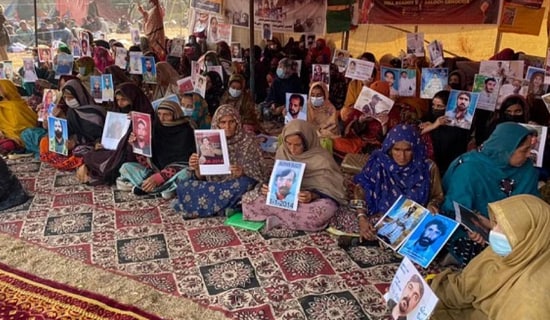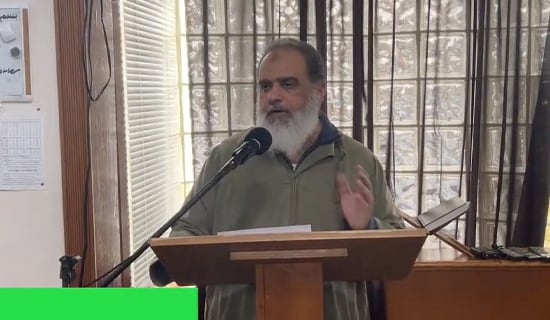On June 16, 2012, protests broke out on the campus of the University of Khartoum (UoK) over the deteriorating economic situation in Sudan. In the days since, the protests have spread to neighborhoods and suburbs of Khartoum and to other cities and towns in the country, with what began as an outcry against the government's austerity measures escalating into demands for the overthrow of Omar Al-Bashir's National Congress Party regime.
Following is an overview of the protests and their development:
Protests Move From The Campuses To The Streets
On June 16, 2012, female UoK students sparked demonstrations on the women's campus in protest against economic measures taken by the government, chiefly a price hike in transportation and basic commodities and the cancellation of gasoline subsidies. The protests were soon joined by male students, spilling into the streets outside the campus, where they were confronted by police. In the ensuing days, student protests spread to other universities and colleges in Khartoum and in other Sudanese cities. Police grappled with protestors, making large-scale arrests and employing tear gas heavily.[1]
Since the outbreak of demonstrations, events in Sudan have been following a course similar to that seen in "Arab Spring" countries such as Tunisia, Egypt, and Yemen, as characterized by the following:
- Sporadic demonstrations in various locations, with youth and students playing a major role.
- The extensive use of social networks by social groups as a tool to mobilize activists, protestors, and sympathizers, though these networks in Sudan are less developed than in Egypt, for instance. The largest Facebook groups have at most tens of thousands of members, in comparison to membership numbers in Egypt that reach the hundreds of thousands and even millions.
- Dedicating Fridays to concentrated protest efforts, following Friday prayer in mosques, with each Friday being given a unique name (e.g. "Sandstorm Friday", "Lick Your Elbow Friday", "Foreigner Friday").
- Nightly protests in neighborhoods and towns.
- Oppression of protestors by civilian units of thugs assisting official forces.
On June 22, nicknamed "Sandstorm Friday," other sectors joined the protests that erupted after Friday prayers. Demonstrations were held in multiple locations in Khartoum, as well as many other cities and regions.[2] Numerous YouTube clips show protests with dozens of participants chanting slogans denouncing the regime, and protesting the economic situation in the country and the government's austerity measures.

Protests in Nyala, June 20, 2012.[3]

Protests in Qadarif, June 25, 2012.[4]

Protests in Khartoum, June 22.[5]
On June 29, Sudanese opposition groups called for a day of protest, calling it "Lick Your Elbow Friday." The name was chosen as a reaction to a statement by one of the regime's top figures, Nafi' 'Ali Nafi', who said that toppling the regime would be as impossible as licking one's elbow. Demonstrations were held in many locations throughout Sudan. Police cracked down heavily on the protests, reportedly arresting around 1,000 people and using tear gas to disperse protestors. According to some reports, police pre-empted gatherings in central locations, surrounding mosques following Friday prayers and in some cases even raiding or firing tear gas into mosques.[6]
As the protests continue, opposition groups have been documenting developments on the ground. On their Facebook pages and Twitter accounts, they provide information about the location of protests, the number of demonstrators, and names and photos of those arrested. They also document violence employed by police and by civilian units deployed to assist the government.
It should be noted that Sudanese communities abroad have also held solidarity protests in dozens of locations, including New York City, London, Paris, Toronto, Oslo, and Cairo.

Medical students hold a protest at the UoK, July 1, 2012.[7]
SUPPORT OUR WORK

Government Responds With Crackdown On Protestors, Students, And Political Activists
Sudan's police and security forces have responded to the protests with severity, clashing with, firing tear gas at, and arresting protestors, and sentencing numerous activists and protestors to public lashings. Some of these public punishments have been documented on YouTube.[8] Additionally, there have been mass arrests of political activists from various opposition parties and groups. The government has also been using civilian thug units, known as rabata, to crackdown on the demonstrations.[9]
The government has also arrested some Sudanese journalists and expelled several foreign journalists. Security services issued a ban on any public activity in the headquarters of the Umma party, one of Sudan's major political forces, in response to which the party announced that it would defy the ban.[10] Likewise, security forces and police have conducted raids and arrests in student dormitories in various universities, as well as in the homes of political activists.

Protester being lashed in 'Aylafun, June 26, 2012.[11]
Al-Bashir: The Demonstrators Are "Foreigners"
Regime spokesmen and leaders have downplayed the protests, saying that the reports of their scope have been exaggerated. Moreover, they insist that the protestors do not represent the mainstream of public opinion, often referring to them derogatorily as "foreigners," "bats," "saboteurs," and so on, while blaming the U.S. or the "Zionists" for the country's problems.
In a June 24, 2012 speech to students, Sudanese President Omar Al-Bashir himself minimized the protests, saying: "Those who hoped for an Arab spring in Sudan have been disappointed... If the Sudanese people wants to rebel, it will rebel." Al-Bashir claimed that on Friday, June 22, he had driven through Khartoum in an open limousine, without any fear, and had received a warm welcome from the crowds. He called the protestors "foreigners and bubbles that will soon [be burst]," and said the protests had been instigated by foreign elements. He also threatened to bring in "real mujahideen" to suppress the protests.[12]
Sudan's minister of finance, 'Ali Mahmoud, stressed that the government had no intention of easing the austerity moves, despite the protests,[13] while 'Ali Nafi' 'Ali, a senior advisor to Bashir, accused "Zionist groups in the U.S." of collaborating with Darfur rebels and South Sudan in an attempt to destroy Sudan's economy.[14]
Thus far, Sudan's opposition parties have fallen short of declaring their full support for the protests and have failed to play any significant role in them. While two of the major parties, the Umma Party and the Popular Congress Party, are discussing drafts of documents meant to administer Sudan following Bashir's ouster, titled The Democratic Alternative and The Constitutional Declaration, these talks have yet to bear fruit; and in the meantime, various smaller opposition groups have taken charge of the demonstrations.

Poster distributed on social networks calling for peaceful general strike on June 30, and featuring logos of opposition groups.
*R. Green is a research fellow at MEMRI.
[1] Alarabiya.net, June 19, 2012.
[3] Algareda.com, June 21, 2012.
[4] Facebook.com/Girifna.
[5] Twitter.com/#!/sahmed164.
[6] Al-Sharq Al-Awsat (London), July 1, 2012.
[7] Facebook.com/SudanChangeNow.
[9] www.alarabiya.net, June 23, 2012.
[12] Alarabiya.net, June 25, 2012.
[13] Al-Sharq Al-Awsat (London), June 27, 2012.
[14] Akhir Lahza (Sudan), July 2, 2012.




